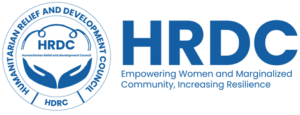Education
Somalia has an adult literacy level of less than 25%. At the primary school level, 84% of the teachers have primary school as their highest level of education while 16% have some exposure to secondary education or a higher degree. HRDC recognizes the gap in education quality and access as a major challenge both as a humanitarian challenge and a development challenge.
To develop equitable and quality education opportunities amongst refugees, returnees, and vulnerable host communities, HRDC supports government efforts in the rural areas with a view to increasing the net enrollment rate to 65% by 2015. HRDC is involved in the development of school facilities and infrastructure.
To empower and mitigate school drop out of the girl child, we are also involved in advocacy to sensitize equitability in government regulations for and in schools. HRDC supports teacher training through the provision of learning materials to disadvantaged schools. Further intervention will involve the development of teacher training institutions as well as advocacy in curriculum development to enhance sustainability systems in schools particularly in view of the fragile peace situation.
Few primary and Secondary Schools with low enrolment, student retention, and transition rates, and non-functional vocational training centers are some of the greatest education challenges in Somalia. In partnership with relevant organizations, HRDC strives to develop and scale affordable and innovative solutions that raise the quality and accessibility of public education systems for marginalized children.
We place a premium on girl child protection through GBV recovery centers and desks within schools and safe community points, early childhood education (ECDE), as well as student mentoring. Thus, we advocate for quality and equal access to girl child education. We place a premium on girl child protection through GBV recovery centers and desks within schools and safe community points, early childhood education (ECDE), as well as student mentoring. Thus, we advocate for quality and equal access to girl child education.
Youth
Our Vocational Training Activities & Objectives
To support enhance individual employability.
To support reduce the mismatch between the demand and supply of skilled manpower.
To support an alternative for those intending to pursue higher education without particular interest or purpose.
To support students for identified vocations spanning several areas of activity.
To support an emphasis in technical education will also be on the development of attitudes, knowledge, and skills for entrepreneurship and self-employment.
To support opportunities to fulfill the needs of women, rural and the deprived sections of society.
To support opportunities for professional growth, career improvement, and lateral entry into courses of general, technical, and professional education through appropriate bridge courses of polytechnic and technical education training programs.
HRDC Works on youth-led dialogue and exchange generate alternative narratives to extremist discourses and provides platforms for young people to build together more open, inclusive and resilient communities.
The HRDC coordinates the Mustaqabal program “Future Forecast Programme” that uses youth-led debate to develop critical cognitive skills and challenge negative mutual perceptions, described as “one of the most successful examples of a skills transfer and training initiative that is continuing to expand Moving Youth Policy from Debate into Action. The HRDC is also participating in a consortium of leading partners to deliver high-Quality Programmes,
VOCATIONAL SKILLS TRAINING
We provide vocational skills training to the youth and women at risk. We focus on electronics repairing, secretarial studies, and handcrafts skills to prepare the youth for employment.

